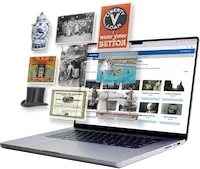Effective Measurement of Archival Impact

Margot Note
Measuring the right metrics in the right way is the key to assessing the impact of archival endeavors. Archivists play a crucial role in preserving historical records, and their efforts are best evaluated through well-defined benchmarks.
Effective measurement in archival practices emphasizes the importance of benchmarks in aligning goals, tracking engagement, influencing decisions, demonstrating cost savings, and fostering impactful partnerships.
Archival Benchmarks: Points of Reference for Continual Improvement
Archivists embark on a journey of impact measurement by establishing benchmarks that align with their overarching goals. These benchmarks are a reference point for evaluating performance and progress over time. By benchmarking against past achievements, archivists gain valuable insights into the trajectory of their initiatives, allowing them to adapt and refine their strategies for even greater success.
In addition to benchmarking against past achievements, archivists also employ various assessment tools and methodologies to measure the impact of their archival initiatives. These assessments may include qualitative and quantitative analyses, user feedback surveys, and archival engagement metrics. By integrating these diverse evaluation methods, archivists can understand the effectiveness of their preservation and access efforts.
Moreover, this multifaceted approach enables them to identify areas of strength and areas that may require improvement. The continuous evaluation and adaptation of strategies based on these assessments contribute to the dynamic and evolving nature of archival practices, ensuring that archivists remain responsive to the evolving needs of their audiences and stakeholders.Top of Form
Tracking Engagement to Align with Audience Preferences & Needs
One of the foundational pillars of archival impact measurement is the meticulous tracking of engagement. Archivists leverage digital analytics tools to monitor various aspects such as website traffic and user interactions, and to download statistics. This data is a treasure trove of information, revealing the materials most frequently accessed by users.
Armed with these insights, archivists can curate collections that align with user preferences and needs, enhancing the practical value of their resources. The ability to showcase increased engagement becomes a powerful testament to the relevance and accessibility of archival materials.
Moreover, the engagement data analysis goes beyond understanding popular materials; it extends to improving user experience and outreach strategies. Archivists use this wealth of information to enhance existing collections and tailor future acquisitions and digitization efforts.
By identifying patterns in user behavior, archivists can make informed decisions about digitizing specific types of documents or expanding certain thematic collections. Additionally, the data allows archivists to identify gaps in content that might need attention or promotion. This approach ensures that archival materials remain responsive to their user community’s evolving needs and interests. The meticulous tracking of engagement is a roadmap for continual improvement and adaptation.
Influence in Action: Connecting Archival Programs to Organizational Strategy
Archivists measure impact with quantitative metrics and the qualitative influence of archival insights on organizational decisions. Historical context serves as a guiding force in shaping strategic choices, legal decisions, marketing campaigns, and various initiatives. Archivists document instances where their contributions have influenced decisions across the enterprise. This bridge between archival programs and organizational strategy solidifies their role as indispensable contributors to informed governance.
Demonstrating Efficiency: Time and Cost Savings
Another dimension of archival impact measurement is showcasing the tangible benefits of archival initiatives. Digitization projects, for example, play a pivotal role in streamlining record retrieval, reducing physical handling, and minimizing wear on materials.
The quantification of time and resources saved through efficient archival processes provides a compelling argument for the value of archival services. Archivists can demonstrate the preservation of history and the cost savings and efficiency gains resulting from their strategic initiatives.
The Ripple Effect: Archival Impact Across Organizations
The impact of archivists often extends beyond their immediate domain and comes about through strategic collaborations. Archivists measure their contributions by showcasing partnerships with legal, marketing, research, and program departments.
Collaborative projects integrating archival resources into these diverse domains highlight the broader organizational goals to which archivists contribute. Through these partnerships, archivists expand their reach and amplify their impact, making their role integral to the success of various organizational endeavors.
Go Beyond Tracking Results to Guide Future Success
Effective measurement is not just a requisite for archival impact assessment; it is the guiding compass that directs archivists toward success.
By establishing benchmarks, tracking engagement, influencing decisions, demonstrating efficiency gains, and fostering collaborations, archivists preserve history and contribute to the dynamic landscape of organizational success. Measuring archival impact is the key to unlocking and showcasing the enduring effect of archivists on the tapestry of human history.

Margot Note
Please join us for a free webinar, Measuring Archival Impact, on Wednesday, November 13, 2024 at 11 a.m. Pacific / 2 p.m. Eastern. (Can’t make it? Register anyway and we will send you a link to the recording afterwards). Register now or call 604-278-6717.
Never miss another post. Subscribe today!
Similar Posts
Principles of Archival Preservation: Agents of Deterioration and Preservation Strategies
Explore the 5 key agents of deterioration and essential archival preservation strategies to safeguard your collections for future generations.
Creating Effective Archival Finding Aids: Tips for Writing Clear Descriptions
Clear concise archival descriptions improve accessibility support discoverability and enhance the research experience. In this article we’ll explore best practices for crafting finding aids that are both informative and engaging.
Balancing Collection- and
Item-Level Information in Archival Description
How much detail is enough when describing an archival collection? Finding the right balance between broad overviews and detailed item descriptions ensures accessibility research efficiency and proper context for archival materials.
Best Practices in Archival Description
Standards like ISAD(G) DACS and EAD guide archivists in creating clear consistent descriptions for easier access. Learn more about each of these frameworks and how they enhance visibility and research.







Leave a Comment
Comments are reviewed and must adhere to our comments policy.
0 Comments